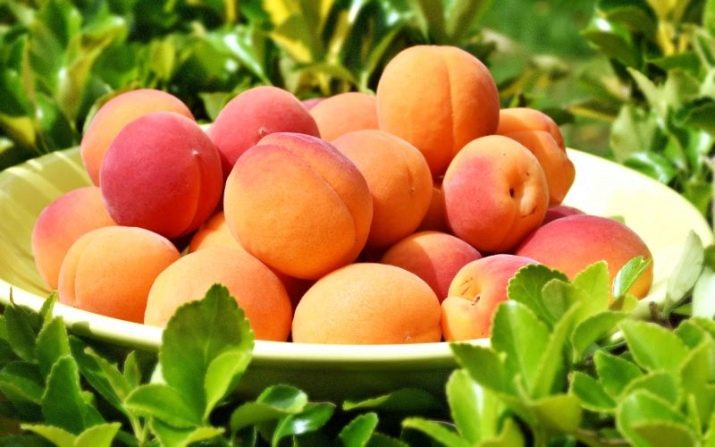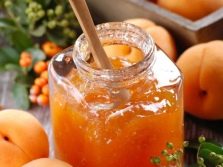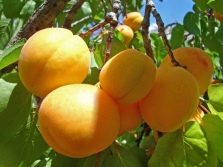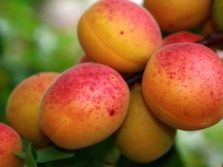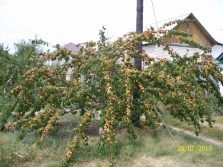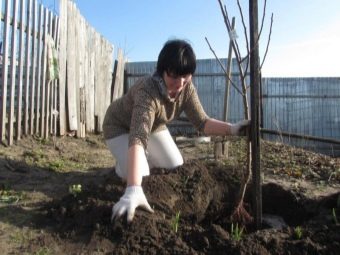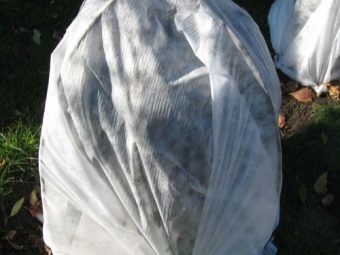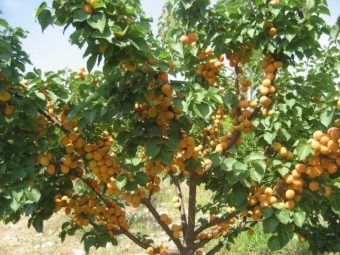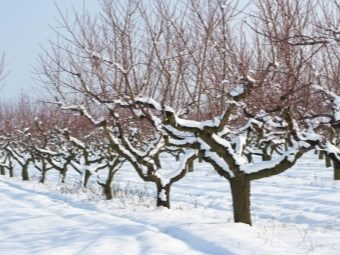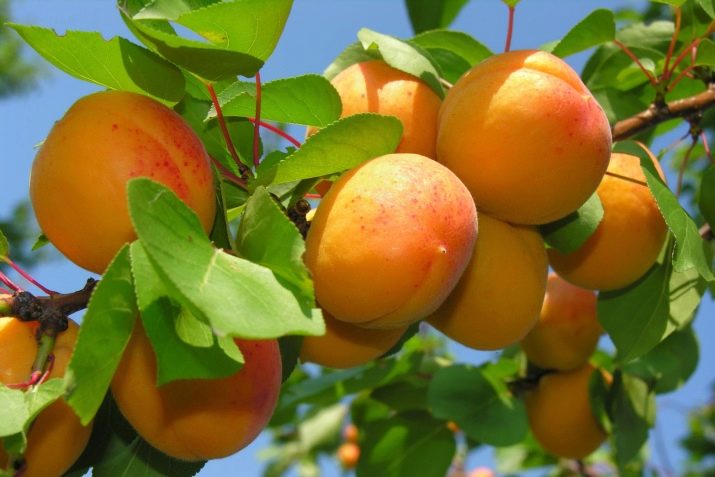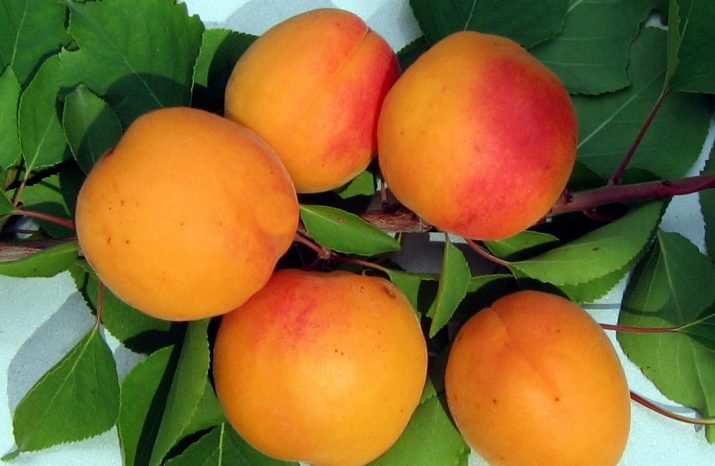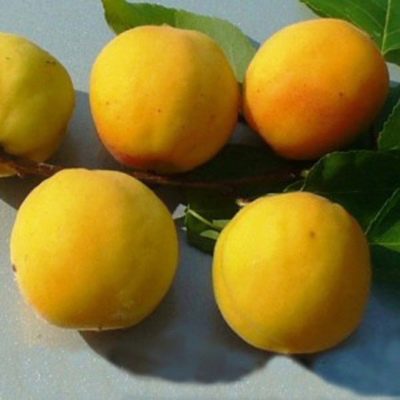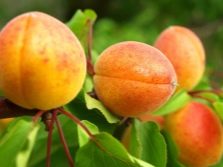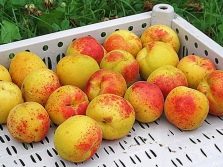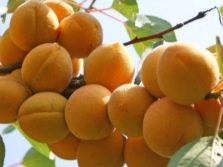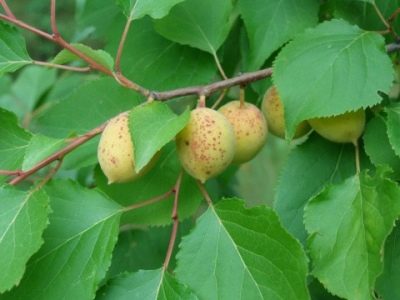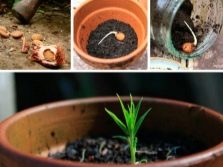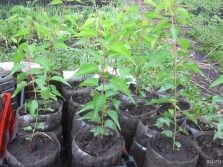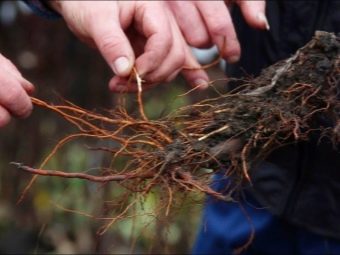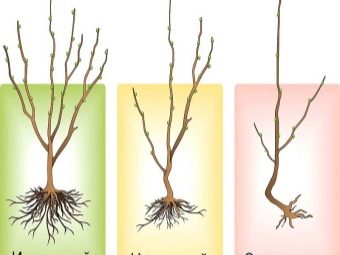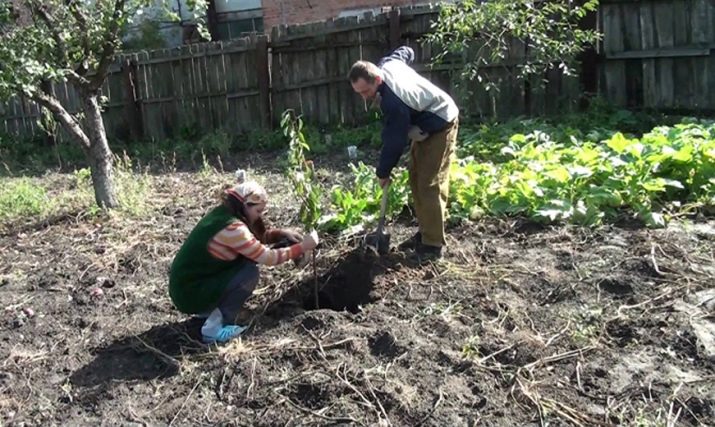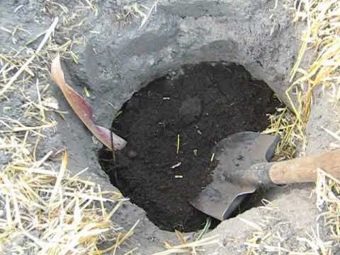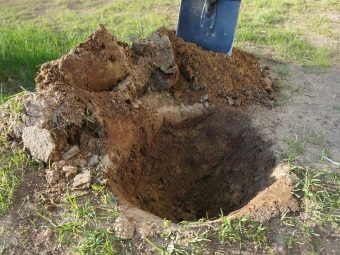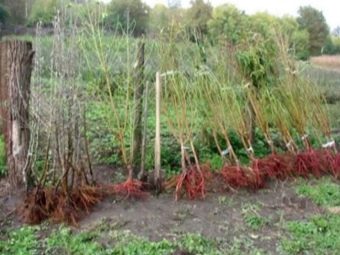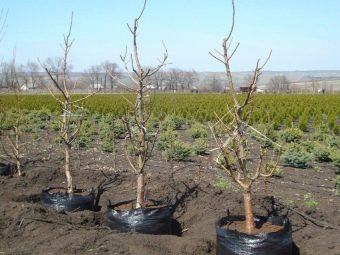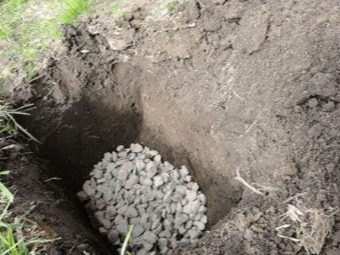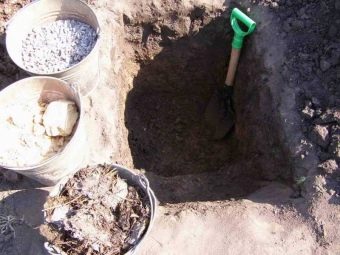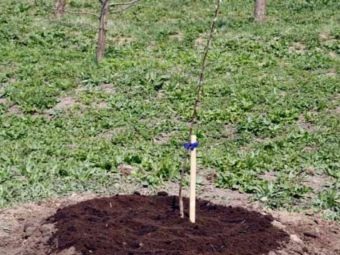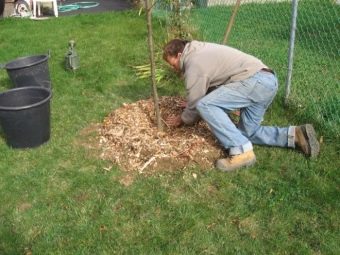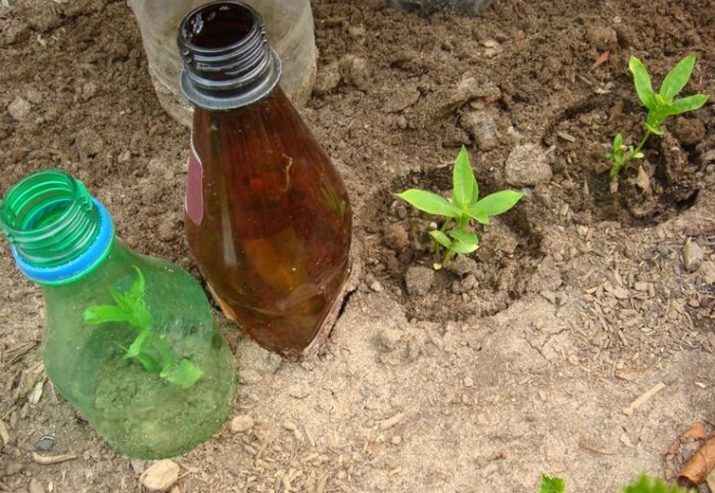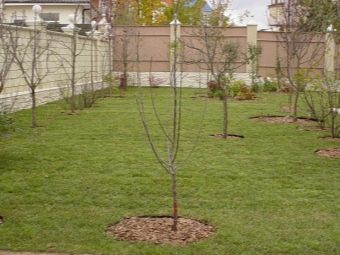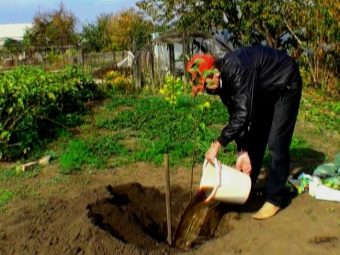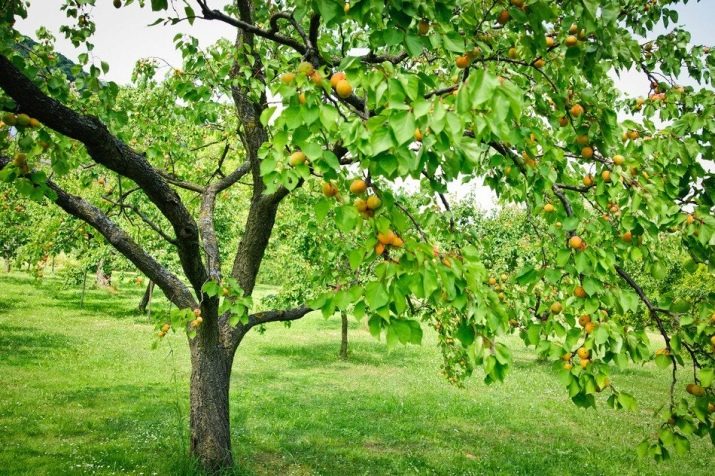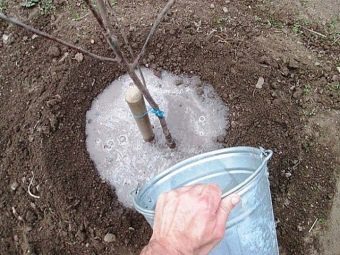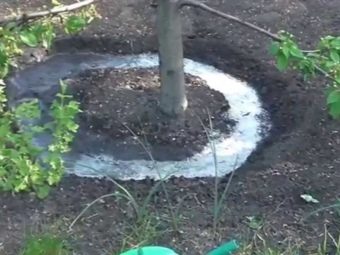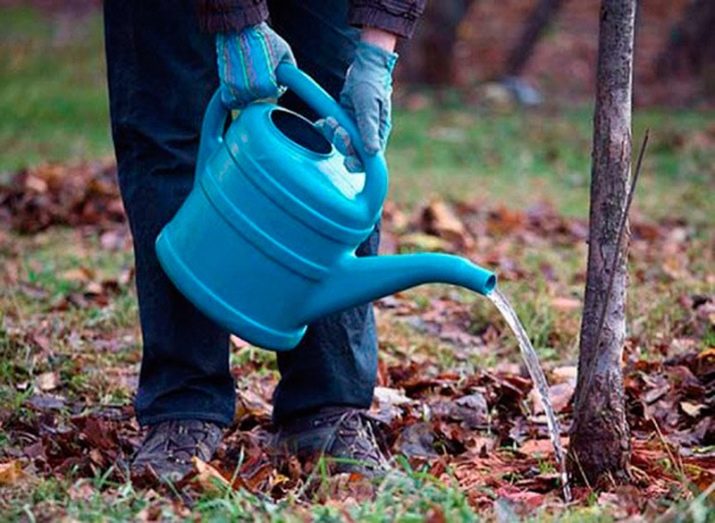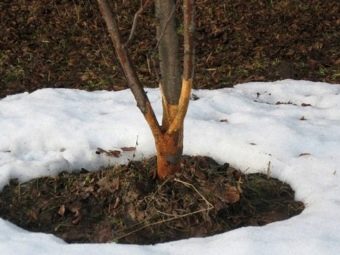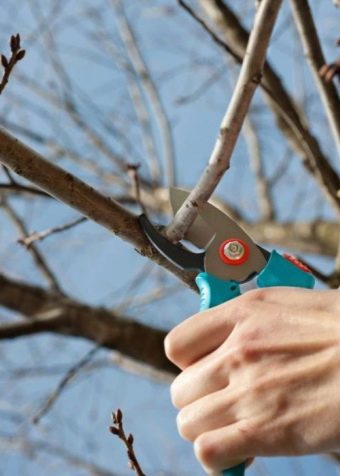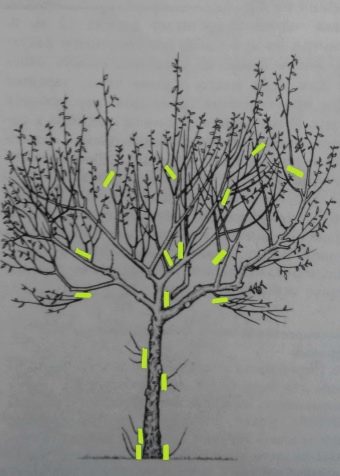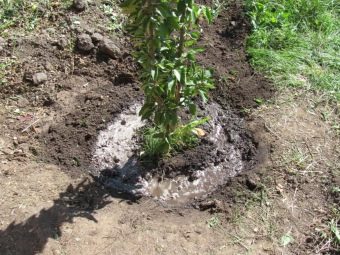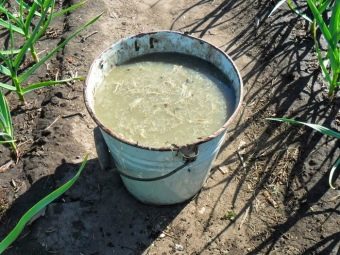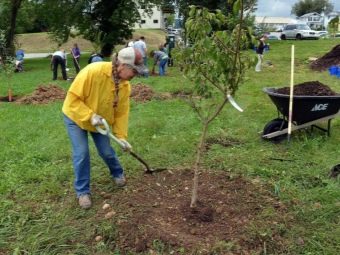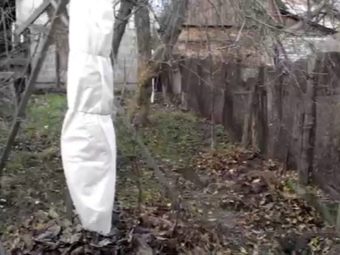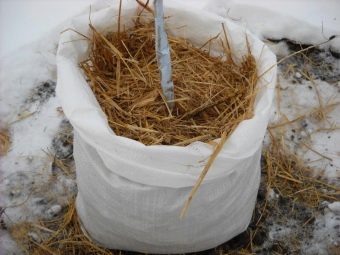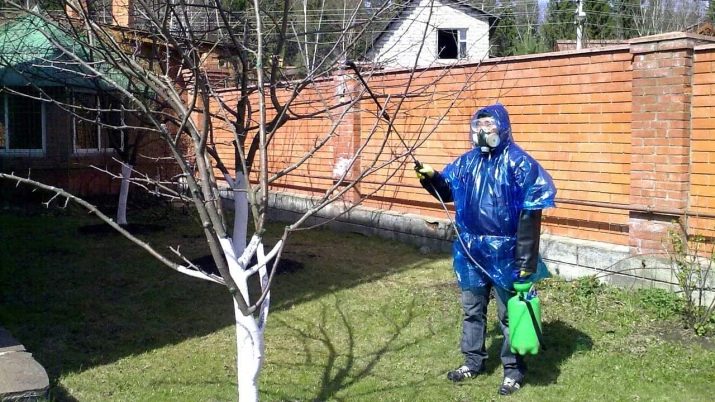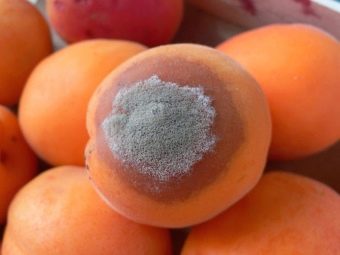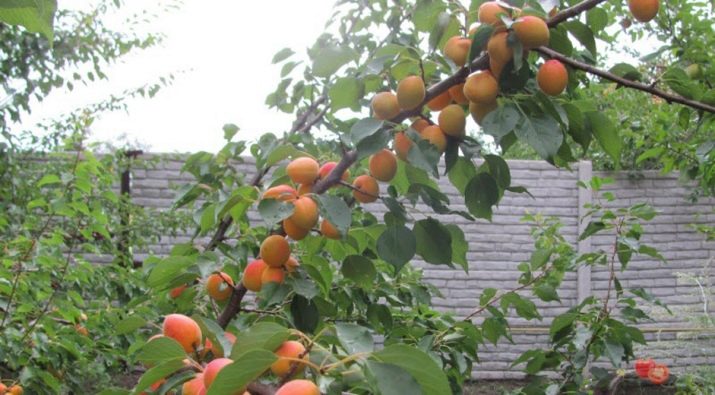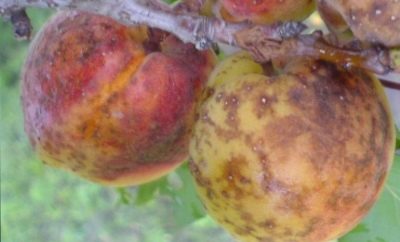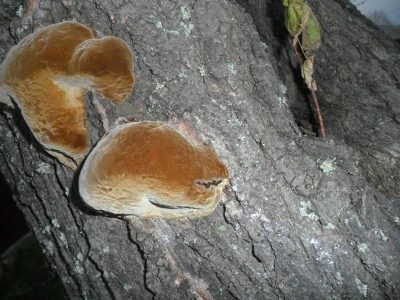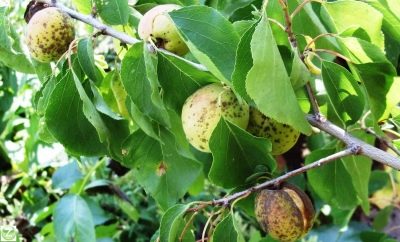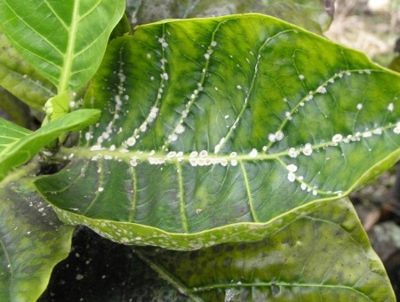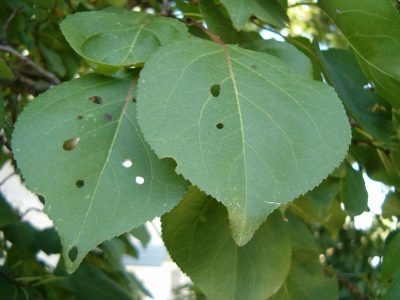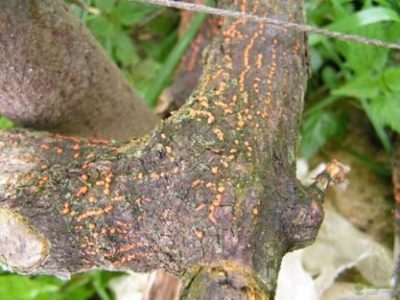Apricots: planting, growing and care
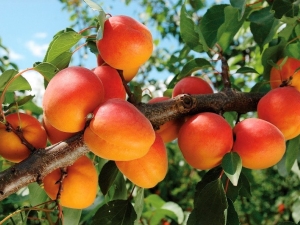
Apricots grow in almost every area. Proper planting, cultivation and care allow you to get a good harvest, which will delight all households with their quantity and taste. To grow on your site a healthy tree, you should familiarize yourself with the recommendations of experts.
Special features
Apricot has good taste and nutrition. Many people use it fresh or make jam. Also popular are apricot compotes and marmalade, which have a unique aroma and taste.
Previously, it was believed that the cultivation of apricot is possible only in regions with warm climates. However, breeders have carried out hard work on this tree, so that apricot successfully bears fruit even in a cold climate zone. Flowering will be observed every spring, fruits ripen in summer.
Apricot features:
- apricots belong to the genus of plum;
- trees were imported from Greece or Asia;
- the plant has an average height and dense crown with round and pointed leaves;
- the tree blooms with white or light pink flowers of small size;
- fruits are distinguished by a rounded shape of yellow-red color;
- the taste of apricot has a moderate sweetness;
- flowering occurs before the leaves appear (March or April);
- harvesting is done in July or August;
- active fruiting occurs in the fifth year of life, if the planting was done with the help of a stone;
- the life of the tree is about 100 years;
- apricot is able to multiply up to 40-50 years
Depending on the region
The period of planting apricot trees may vary based on the region. It is necessary to take into account the climatic conditions of the city, so that the tree would settle down and not suffer. In the Volga region, the landing can be started in the last decade of March or in early April. The best varieties for planting in these climatic zones are northern varieties.
For regions from the middle band and the suburbs, dates are selected based on weather conditions. As a rule, the landing begins no earlier than the last decade of April. In the Urals or in Siberia, it is allowed to plant only the northern types of apricot tree in the last days of April.
If frosts are observed, the seedlings are covered with non-woven material.
For areas in which there is a cold climate, it is necessary to choose varieties that have been specially bred for this climate zone. Breeders prepared frost-resistant trees, reproduction of which is based on self-pollination. For this reason, the sites should be rooted seedlings of several types that have different ripening terms.
Let us examine several varieties of the best apricot trees.
"Kichiginsky"
This variety belongs to the category of hybrids and has good resistance to severe frosts. Fruiting occurs in the fifth year of life. Apricot fruits are distinguished by medium size, juicy, pleasant aroma and sweet taste.
"Snezhinsky"
This tree will be able to adapt in arid and cold climatic zones. Fruiting occurs in the fourth year of life. The fruits have a bright yellow color, the sides are painted in red blush. Most people are attracted to the sweet flesh of the fruit, which is easily separated from the stone.
"Piquant"
Most often, this variety can be found in central Russia. Apricot has good resistance to frost. The fruits are small in size and yellow in color, along with juicy and delicate aroma. Maturation occurs in early August.
Other varieties
On the territory of Siberia, you can often find varieties "Amur", "Khabarovsk", "Seraphim".Each of them can bear fruit in a harsh climate and is actively planted in the northern regions. The main feature of apricot trees of these varieties is that the fruits ripen in a short time and have good taste. Other
Successfully fruits in Siberia and the variety "Wild Manchurian". Fruits often have bad taste and characteristic sourness, but from this type you can make good jams and compotes, so it is often planted on their plots summer residents.
How to plant?
Apricot trees can be grown in several ways, among which the cultivation of stone is popular. By choosing this method, gardeners can get a ready-made, acclimatized tree, which has many chances for engraftment after transplantation to the site.
This method has the disadvantage that there is no guarantee that the crop will be consistent in its properties with the fruits of the original tree. In most cases, this discrepancy is an advantage, since fruits grown from seeds have larger sizes and good taste, compared with apricots on the original tree.
To get a full copy of the original, you can use cuttings. However, rooting the cutting does not always end with luck. Rooting activities are durable and laborious. With appropriate knowledge and experience, the tree can be grafted with the help of a stock from cherry plum, plum or apricot of another variety. This method allows you to guarantee the preservation of all the qualities that are peculiar to the parent tree.
The easiest method is reproduction with ready-made seedlings. To acquire a young tree should be in specialized nurseries, so as not to encounter low-quality seedlings.
How to choose seedlings?
When buying a young sapling, you need to make sure of its quality. Experienced breeders recommend purchasing trees that are one year old. In this case, the chance of rooting of young plants increases. Also need to examine in detail the state of the branches. Spines are a sign of a wild variety. At the site of vaccination should be located small thorn.
The state of the root system has an impact on the health of the seedling. Roots should not have signs of frostbite or rotting.
Site preparation
When choosing a place where you need to plant a sapling, you should remember that apricots do not tolerate water stagnation and exposure to cold air. Southern trees need the sun, so for them you need to pick up a sublime area with good lighting. The territory should be reliably protected from gusts of wind and drafts. With the help of such conditions it is possible in a short time to achieve the fruiting of apricot on the territory of the Urals.
It is not recommended to plant trees in the lowlands, as in spring, when the snow melts and during rains, liquid will accumulate around the apricot, which will lead to the death of the crop.
Apricot is considered the most unpretentious in relation to the soil tree. It can grow in almost any soil if it is able to provide a sufficient amount of water and air to the roots of the plant. For this reason, apricot trees grow poorly on clay soil.
Some users still grow apricots in clay plots. Before planting, they carry out work to increase the water flow of the land. To do this, you need to dig a hole under each sapling, the depth of which is at least one and a half meters. The size of the recess should be 2x2 m.
Then the pit is filled with fertile soil of loose type. If it is not possible to find such a land, you can prepare a special soil mixture, which consists of fine peat, coarse sand, and soil from the pit. It is important to choose the right proportions - they should be the same. When planting apricots in areas with heavy ground, you should correctly select the stock to which the future apricot will be attached. Chip is well developed on cherry plum rootstocks, as it is not afraid of dense soil.
Landing time
Apricot saplings differ in hypersensitivity in relation to replanting term. The tree takes root best if the buds do not have time to wake up.
Most of the failed landings are due to late deadlines. When choosing a seedling, whose buds are already awake, gardeners are faced with the death of young apricots. The optimal time for planting is spring, because at this time the kidneys are still sleeping. More accurate dates will be determined on the basis of the city where the plantation of the tree is planned. For regions that are located in the middle and central part of Russia, landing is carried out in early October. When landing at this time, the young tree will have time to settle down at the new place of residence.
In the southern climatic zone, where there is a predominance of mild weather conditions, it is also possible to plant seedlings in the shade. The optimal period is the first decade of October. When planning to engage in planting in the fall, you need to remember that the roots can develop not only at the optimum temperature, but with the necessary amount of moisture in the ground. For this reason, if the site is located in a region where there is a rainy autumn, the root system can fully develop even with a negative temperature, but the seedling will die in winter.
Arrangement of a pit for planting
In preparation for landing in spring, planning should begin in the fall. During this period, gardeners are engaged in digging a hole for transplanting. Deepening should be sufficient so that at first the roots do not abut against hard ground. The optimal dimensions of the pit: 70x70x70 cm. These parameters are calculated for two-year-old seedlings. For trees that have reached the age of three, a recess of 80x80x80 cm should be created.
Let us examine the guidance on the arrangement of the landing pit.
- At the bottom of the pit should be placed a kind of drainage seal, 5-7 cm thick. The pillow should consist of rubble of large fraction or milled brick. Thus, it is possible to protect the seedling from excess moisture.
- Above the cushion is located 8-10 kg of processed manure, to which 200 grams of superphosphate and 150 grams of ammonium nitrate are added.
During the winter period, the earth will become more dense, and the snow, paired with melt water, will be able to mix mineral particles and provide the ground with the necessary components.
Planting seedlings
During planting, it is necessary to observe the sequence of actions so that the tree will develop properly in the future and not die.
Experts suggest using step-by-step instructions, which will facilitate the landing of beginners.
- Before planting should be engaged in the roots of a young tree. To do this, resort to pruning and removal of damaged particles.
- The root system must be dipped in a special mixture, which consists of clay and water, in its consistency, resembling thick cream.
- If fertilizers were not added in the autumn, you will need to add to the soil a mixture with chicken droppings (0.5 cups per bucket).
- The root system is covered with soil to the level of the neck of the trunk (about 1 cm of the neck should remain on the surface). Experienced gardeners leave a small elevation around the trunk so that when irrigating, the liquid does not accumulate under the trunk, but spread throughout the entire circumference.
- After planting, the young apricot is tied to the post.
- In order for the sapling to settle down better, it is recommended to mulch the soil around the tree, so that during the first year the necessary temperature and water regime are present. For mulching, fine straw, hay, or fallen leaves are used.
- If several seedlings are planted, they should be located at an optimal distance from each other. The minimum distance is 3 meters.The aisle should be located at a minimum distance of 5 meters.
How to plant apricot stone?
For planting, you can use the bones obtained after the last fruiting. Freshly harvested seeds are cleared of pulp, washed and dried. The landing is best done immediately in autumn. When landing in the spring will require additional steps.
After planting in the fall, the stone will be stratified in the soil and will be able to germinate in a natural way. If the landing is carried out in the spring, this process should be carried out in artificial conditions. For this, the bone is soaked for 3 days in water. The fluid should be changed every day, after which the bone is moved to a container with wet sand. In this state, the future apricot should be for a month. It is necessary to ensure that the stone is completely in the sand, and the sand always remains wet.
Germinated seeds are planted in a permanent place of residence upon the occurrence of optimal weather conditions.
Some gardeners immediately planted future apricots in open ground, but in this case, the death of shoots is observed. For this reason, it is recommended to create a kind of “nursery” where young saplings will be protected from weather conditions and pests.
When the shoots appear above the ground, they need to cover with a plastic bottle, the bottom of which is pre-cut. In a similar greenhouse, the young apricot will not suffer from temperature drops and rodent attacks.
After 3-4 weeks you can remove the bottle, as the apricot is firmly entrenched in the ground and can develop independently. Now the sapling will need timely watering and careful grinding of the soil near the trunk. Autumn young trees can be transplanted.
Unwanted neighborhood
When planting, it is necessary to take into account which trees are located nearby, because with incompatibility it is possible to face the fact that apricot cannot fully develop and bear fruit. Breeders report that apricots are an individual culture that does not like neighbors. Planting next to trees such as cherries, different varieties of apple trees, walnuts, peaches, pears, raspberries and currants is contraindicated.
If there is a plum near the apricot, the minimum distance between the trees should be 4 meters. Otherwise, the trees will negatively impact each other.
Watering rules and care
To grow a healthy apricot that will actively bear fruit, you need to take good care of the tree and protect it from various parasites. Care is the timely watering, processing and insulation in the winter season. Preventive measures allow you to avoid disease and death of plants.
Watering
In the first year of life, apricots should be provided with regular watering. Despite the fact that trees have a high level of resistance to drought, watering is still required, since the development of the root system can occur only with sufficient moisture.
If the spring is dry, apricot should be watered abundantly before flowering, as well as a month after it. Mandatory watering is done 2 weeks before the fruit ripens. This procedure affects the taste of apricots - they become juicy and fragrant.
Apricot does not tolerate drastic changes in its growing conditions. If watering is not done in the spring, you should not resort to the procedure during the hardening of the seed, as the tree may begin to get rid of the ovaries. There are watering norms that make up 50l / sq. m. During drought, fluid intake is doubled.
It is useful to water the trees in autumn when the leaves turn yellow. In the autumn, the rate of irrigation is 80 liters per square meter. With the help of such a manipulation can be strengthened apricots before the cold.
Growing apricots in a cold climate zone is accompanied by its own characteristics. Care must be done throughout the year. When snow falls, the root collar will need to be cleared from it to allow the soil around the trunk to freeze. Such an action does not harm trees.
The period of snow melting is the most dangerous time, as water in large quantities begins to flood the area where the root neck is located. At night, the water freezes and the neck is debated. Gardeners living in the Chelyabinsk and Sverdlovsk regions, as well as in Siberia, often encounter this phenomenon. In these regions, apricots often die during snowmelt. To protect your tree, you will need to scoop up the snow masses from the trunk and pull out small grooves, through which water will be drained.
During warming and flowering the tree will need regular water saturation. Apricots are watered once every 14 days. Liquid consumption is 5-6 buckets.
It is necessary to control the process of watering, since water should not stagnate in the roots. To do this, a couple of days after watering, you need to loosen the soil under the trees and remove weeds.
Pruning
Proper pruning contributes to good fruiting and resistance to frost. When blooming buds, branches that grow in the center of the crown and thicken it should be removed. Such an action activates the process of growth of young shoots, which will produce fruits in a couple of years.
Experienced gardeners recommend the formation of apricots using sparse-tiered method at a time when the shoots will grow at a distance of 35 cm relative to each other. Old branches without fruits also need to be removed. Thus, the tree gets a neat look and develops correctly.
Thaw in winter carries a danger to the apricot tree. During it, young buds start to wake up, which die when the temperature is lowered. In the future, apricot grows poorly and ceases to bear fruit. In order not to face such a situation, it is necessary to tackle the tips of the young shoots in June. This event will not allow the kidneys to wake up in the winter. Also, do not forget about the need for sanitary trim. The procedure is to get rid of sick and drying shoots.
Fertilizer
Growing apricot trees in the regions of central Russia, you should regularly resort to feeding. If at the time of planting a sufficient number of mineral fertilizers were used, it is possible to start fertilizing only next year.
In the spring, biennial trees should be fed with a mixture of chicken manure. This will require one litter bucket per 15 liters of water. Future feeding should be infused for several days. Under each tree will need to make 10 liters of the mixture.
Before the flowering process, you must create the following dressing:
- 10 liters of water;
- 1 large spoon with potassium sulphate;
- 2 large spoons of ammonia nitrate
Formed with the liquid you need to pour apricots. This fertilizer is repeated immediately after the tree has faded.
In the autumn, you need to make digging and fertilize with the help of compost the area on which the trees are located. Compost can be replaced by rotted manure. The older the apricot, the more fertilizer it will need. For four-year-old trees, the rate of supplementation is doubled, for eight-year-olds - by three. In the future, the number of additives is increased based on the age of the apricot.
Warming
In order for the apricot trees to successfully winter, it will be necessary to consider protection from cold weather even in autumn. To do this, gardeners resort to whitewashing trunks to the branch zone and using lapniki to tie around the root sections. Lapnik will protect the tree from attacks of rodents. The root system is insulated with auxiliary layers of earth, which are located around the trunk.
When a large amount of snow mass falls, you can use it as a “cover”. You need to cover the area around the trunk. Using this simple method, you can protect the root system from freezing. To prevent damage to flowers during spring frosts, it is best to choose a variety that blooms late. Otherwise, you will need to warm the crown in early spring.
During the autumn leaves fall, you must promptly remove fallen leaves from the ground. This is due to the fact that they begin to grind, and negatively affect the trees.
Diseases and pests
It will not be possible to get a good apricot crop without resorting to protecting plants from various pests and diseases. Planting apricots in the spring, you should ensure that a list of preventive measures, which consist in the removal of diseased branches. If the disease has arisen on the basis of wintering pests, it is necessary to burn all the removed leaves and branches. Systematically should be sprayed tree chemical means. You can also spray the apricot with a solution of hydrated lime.
When growing apricot trees, you should study the list of common diseases in order to identify the disease in a timely manner and start the correct treatment. Late struggle or improper treatment can lead to the fact that the apricot will die.
Monilioz
When an apricot looks like a fire-gutter during flowering, and before that the temperature has dropped, it means that the tree has been attacked by moniliosis. This is a type of fungal disease that enters the tree through the pistil of a flower, due to which the bud, leaves and twigs dry out. The appearance of the disease is like getting monilial burn.
To prevent moniliasis, the following actions are required:
- need to monitor the change of weather conditions;
- when the time comes in early spring and late fall, as well as after flowering, apricot processing will be required with the help of “Mikosana-B”, “Skoroma” or means in which copper components are present.
- when a monilial burn is detected, instant processing of the remaining trees is required, because the fungus multiplies very quickly.
Experienced breeders believe that apricot trees are sick because of a lack of minerals or, conversely, from their surplus.
If the treatment started late and the fungus struck the tree, you will need to remove the affected parts, collect all the fruits and burn them. It is not allowed to leave rotten fruit on the trees, because the disease will continue to develop and affect other crops. However, there are conditions under which the fungus dies - this is a temperature regime of -20 degrees, along with the white-washed stem of a mixture of copper sulfate.
Breeders are actively working on the development of new varieties of apricot, which will be resistant to moniliosis. However, at present, only an average figure has been achieved by breeding “Dzhengutaevsky”, “Krasnoshcheshkiy”, “Tamasha” and “Black” velvet. These apricot trees do not often suffer from aggressive fungus.
Comedication
The second name of the disease is gum. It is an apricot disease that massively affects trees and develops every year. Treatment consists of pruning damaged branches, disinfecting with a solution of copper sulfate. The fight also shows good results by treating the cut-off areas with garden broths.
Mushroom valsa
Valsa fungus is considered the most popular disease that affects apricot trees. The name of many is associated with ballroom dancing. The name of the disease is chosen for a reason - the fungus spreads with water like a waltzing dancers (fungus).
Outwardly, the fungus can be compared with orange-colored knots, which are located on the branches and bark of trees. The disease is easily recognizable by withering and yellowed foliage, as well as by drying branches. Infection is caused by parasites falling into the wounds of a tree.
To protect the apricot, you can not do pruning in the period when he is at rest. To keep the soil under the trees drained, you will need to use a fungicidal spray.
Bacterial spotting
Bacterial spotting is another popular disease among apricot trees, regardless of the climatic zone. It shows itself as watery and dark spots on foliage. As soon as such signs appear, you should immediately begin to fight. If you neglect the treatment, the leaves will begin to acquire a yellow color and dry. Fruits exposed to this disease are covered with brown spots, which will increase every day.
You should also deal with weeds, which are located next to the apricots. Before planting seeds should check them for infection. In the role of a preventive procedure, resort to spraying the vegetation with a solution of copper sulfate.
Verticillosis
Verticillis is called a harmful and insidious fungal disease, which belongs to the category of soil parasites. The cunning of the disease lies in the fact that it infects everything around it. The result of the disease is the death of the tree. The leaves begin to wither from below, due to which the green foliage is located only on the top of the apricot.
Confronting the disease should begin immediately. The best results are shown by the use of such drugs as: “Fundazol”, “Previkur”, “Vitaros”.
Perforated spotting
This disease is often found in the southern regions. Earlier, perforated spotting infected almost all apricot trees. The foliage with fruits initially suffers. On their surface spots of a reddish-brown color are formed, which after 7-10 days are transformed into holes. Then the tree begins to actively shed its leaves. On fruits, such spots appear even at the moment when they are in an unripe condition. At the time when the apricot must ripen, it is completely deformed.
To save the tree and eliminate the infection of the others, it will require pruning of the disease foci with further destruction using fire. Then you need to disinfect wounds and cracks using garden putty, which contains copper or iron sulphate.
Be sure to conduct preventive measures, which are concluded in the processing of a five percent solution of Bordeaux fluid (autumn and winter). After flowering, processing is performed with a one-percent solution. During early leaf fall, fertilizer should be added to the soil.
Cytosporosis
The disease is a fungus that is located between the bark of the tree and the wood itself. The disease manifests itself in the form of brown-brown spots. The wilting of the foliage starts from the top of the head, after which the bark is affected by dark streaks. Gradually, the disease begins to descend, infecting all parts of the apricot. Infected branches dry, after which the whole tree dies.
Breeders was bred variety "Zhardeli", which is not subject to this disease. Other species must be treated by timely removal of dry branches, so that in the future the fungus does not spread to the rest of the apricot tree. It should be remembered - in order for the disease process to stop, it will be necessary to remove all the affected particles. Dry trees left in the garden are dangerous even for neighboring areas.
Possible mistakes
If at the time of landing to allow at least one minor misstep, it can be transformed over time into a big problem. In order not to harm the tree, you should familiarize yourself with common errors.
- If you prepare the pit for planting just before disembarking, when the land shrinks, the root neck will be in a strong recess. This arrangement does not allow apricot to fully develop.
- The addition of fresh manure during planting has a depressant effect on the roots of the plant.The use of nitrogen-containing fertilizers is not allowed at this moment, since the additives stimulate the growth of the surface part, along with damage to the development of the root system. Ultimately, apricot will begin to weaken and will not be able to survive the winter.
- Buying a tree that is more than two years old will result in apricot adaptation taking a very long time. This will lead to damage in development, and the seedling may not survive the winter.
- Late planting can lead to the fact that in early spring the sapling will die, as it does not have time to adapt to the environmental conditions.
Apricot is a culture that does not forgive its owners for mistakes, so before planting it is necessary to study all the rules and recommendations from experts.
See how to plant apricot and care for it in the video below.

